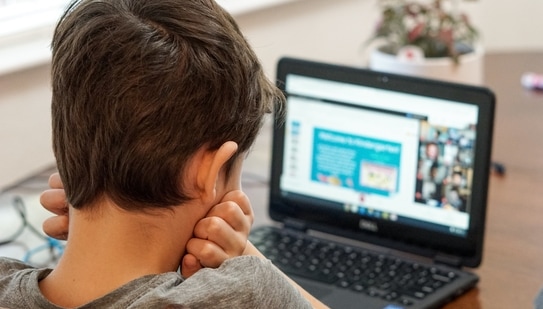Students taking online class during Covid-19 pandemic got more sleep? Here's what study says
Beginning in March 2020, as states and cities imposed lockdowns to prevent the spread of Covid-19, schools and school districts began to teach children very differently. This led to dramatic differences in sleeping pattern.
Different teaching strategies imposed by schools during the Covid-19 pandemic resulted in dramatic differences in when and how much students slept, according to the findings of a new study.

The findings of the study were published in the journal 'SLEEP'.
Notably, students receiving online instruction without live classes or scheduled teacher interactions woke up the latest and slept the most.
Students receiving in-person instruction in schools woke up the earliest and slept the least.
Beginning in March 2020, as states and cities imposed lockdowns to prevent the spread of Covid-19, schools and school districts began to teach children very differently.
Some schools retained in-person instruction in school buildings. Others moved to hybrid instruction. Some went entirely online.
There were dramatic differences in scheduling requirements (e.g., specific start time, day-to-day variability in scheduled instruction).
Online options also differed. Some schools required students to sign on to online classes at specific times and interact with teachers directly.
Other schools did not offer scheduled classes and student work was entirely self-directed.
From October 14 to November 26, 2020 researchers recruited US adolescents in grades 6-12 through social media (Facebook and Instagram) to examine associations among instructional approaches, school start times, and sleep during the Covid-19 pandemic.
Adolescents selected one of three instructional approaches for each weekday (Monday - Friday) during the previous week: in-person; online/synchronous (live online classes or interactions with teachers); or online/asynchronous (online, but without live classes or scheduled teacher interactions).
Researchers received complete sleep outcome data from 5,245 adolescents from across the United States.
For in-person instructional days, 20.4 per cent of middle school and 37.2 per cent of high school students reported getting sufficient sleep (at least 9 hours for middle school and at least 8 hours for high school).
For students taking live online classes 38.7 per cent of middle school and 56.9 per cent of high school students reported getting sufficient sleep.
But over 62 per cent of middle school and more than 81 per cent of high school students taking courses online without live classes reported getting sufficient sleep.
Students, in both middle and high school, got more sleep if they had later school start times.
However, even when students had the same early start times, more students with online courses requiring them to sign in at specific times got sufficient sleep than students receiving in-person instruction.
"Without the required transportation time or time required to get ready for school in the morning, online students were able to wake later, and thus get more sleep," said Lisa Meltzer, the lead author of the study.
For middle school students, a start time of 8:30- 9:00 (in-person or online with live classes) resulted in the greatest proportion of students getting enough sleep.
For high school students, only when the online school day started at 8:00-8:29 am or later, did the percentage of students getting enough sleep exceed 50 per cent.
For in-person instruction 50 per cent of high school students got enough sleep only when the start time was 9:00 am.
Hybrid schedules, that included at least one day of in-person instruction, were associated with the greatest night-to-night variability in bedtimes, wake times, and amount of sleep.
"Both inconsistent sleep patterns and not getting enough sleep have negative downstream effects on adolescent health," said Meltzer.
"Thus, it is important for education and health policymakers to consider the consequences of early and variable school start times on sleep for secondary school students," concluded Meltzer.
Catch your daily dose of Fashion, Health, Festivals, Travel, Relationship, Recipe and all the other Latest Lifestyle News on Hindustan Times Website and APPs.



